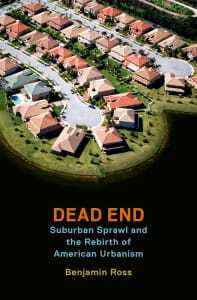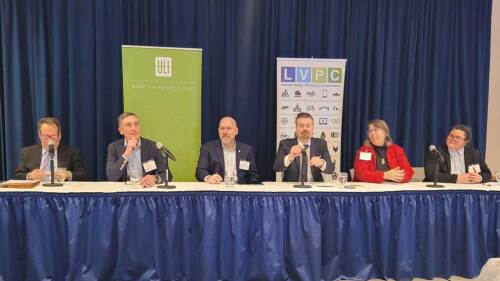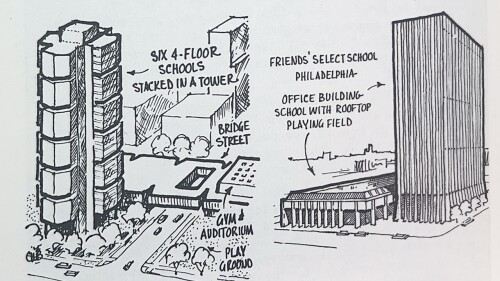Benjamin Ross
Oxford University Press
198 Madison Avenue, New York, NY 10016;
http://global.oup.com
2016. 249 pages. Paperback, $21.95.
In this 2014 book, now available in paperback, transit advocate Benjamin Ross highlights some of the origins of suburban sprawl in the United States. Although most of the book is devoted to the planning history that led to sprawl, Ross also discusses the pros and cons of new urbanism and the politics of smart growth and affordable housing. He traces the decline and beginning of a revival of American cities and says that greater federal support of transit would continue the revival.
One of the first U.S. suburbs, Llewellyn Park, built in South Orange, New Jersey, in the 1850s, set the tone: curving streets, homes set back from the street in the woods, on lots of an acre (0.4 ha) or more. Homeowners signed a mandatory covenant that required “the setbacks and minimum lot size, banned commercial activities, and required payment of assessments to the association.” All the owners possessed the park in common, starting the idea still prevalent today among suburban homeowners that “property rights include a veto over building on neighbors’ land.”
But covenants were not always enforced, and zoning laws were developed as a tool to help homeowners maintain the status quo. After the U.S. Supreme Court struck down race-based zoning in 1917, zoning was used to segregate land by uses, so that offices, factories, shops, and homes were all in separate zones. That idea was a major factor in suburban sprawl right through the rest of the century. A 1926 decision by the Supreme Court upholding zoning made it clear that its main purpose was to segregate people by income and to exclude business and retail from residential areas.
By the 1920s, the car was the king of suburban roads. The tenets of the new planning profession were segregation of land uses, low density, and the fastest possible movement of cars.
When the Institute of Traffic Engineers was formed in 1930, its members designed streets for cars rather than for pedestrians. Streets were widened, more parking lots were developed, and parking minimums were required for new construction. During the 1950s, urban renewal brought about disastrous results for cities as planners applied the principles of suburban subdivision to cities and destroyed homes in order to make room for interstate highways. The author describes the “plague of conformism” during this era in the “dull, undifferentiated suburbs.”
In the current century, suburbs have lost much of their appeal, and gentrification has begun to reshape urban areas. In the last chapter, Ross writes, “The long drive into sprawl has reached a dead end.” He makes the case that better transit, backed by federal funding, would help revive cities. As president of Maryland’s Action Committee for Transit for 15 years, Ross fought for the Purple Line, a light-rail line that will connect parts of the Washington, D.C.–area’s Metro, now the nation’s second-largest subway system. When the hardback edition of this book was published in 2014, Ross wrote that work on the Purple Line would begin in 2015, and that it would open in 2020. But after the 2014 elections, plans were delayed and construction has not yet begun.
Joan Mooney is a longtime writer and editor who has contributed to On Common Ground, the smart growth magazine of the National Association of Realtors, and AARP Bulletin.





